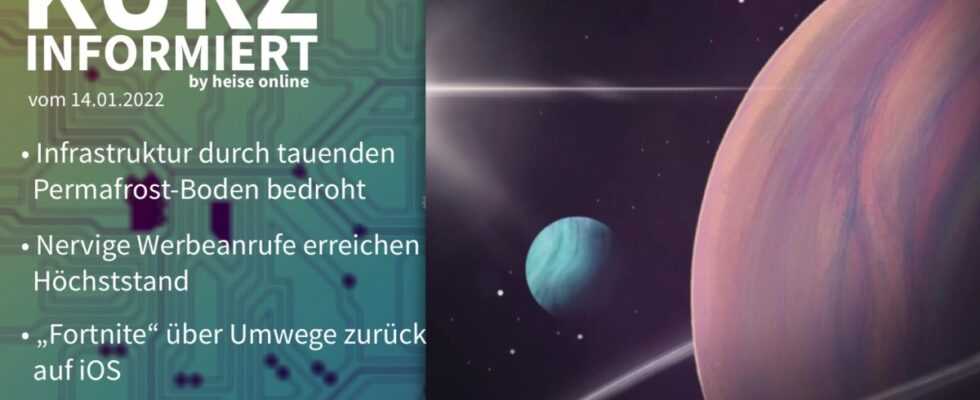Infrastructure threatened by thawing permafrost
Houses fall, pipelines burst, roads sag – everyday life in the far north. 30 to 50 percent of today’s infrastructure in the landscapes around the Arctic Ocean could be destroyed by 2050. This was calculated by a working group from the University of Oulu in Finland. Around 69 percent of all residential buildings, traffic routes and industrial plants in the permafrost regions are located where the ground will soon hardly freeze all year round. The soft mud bottom destabilizes an infrastructure that was once built on hard ice. In addition, the upper layers of the northern permafrost likely store around 1.7 gigatonnes of carbon. However, how quickly and to what extent carbon gets into the atmosphere in the form of CO₂ and methane is still largely an open question.
Recommended Editorial Content
External content will be loaded here with your consent.
Annoying sales calls are at their peak
Advertising calls have never caused as much trouble in Germany as they did last year. The Federal Network Agency received almost 80,000 complaints about unauthorized telephone advertising, 26 percent more than in the previous year. In total, companies were fined 1.435 million euros last year. In future, the advertising companies can be asked to pay even more than before, since the fines in December 2021 in the case of suppressed phone numbers increased from a maximum of 10,000 euros to 300,000 euros.

Our weekday news podcast delivers the most important news of the day compressed to 2 minutes. Anyone who uses language assistants such as Amazon Alexa or Google Assistant can also hear or see the news there. Simply activate the skill with Alexa or say to Google Assistant: “Play heise Top”.
“Fortnite” via detours back to iOS
A year and a half after being sacked, “Fortnite” is about to return to iOS devices – at least indirectly. The Battle Royale shooter will be playable in the beta of the GeForce Now cloud gaming service from next week, operator Nvidia announced. This will make “Fortnite” playable on iPhones and iPads for the first time since it was provoked to be kicked out in summer 2020. However, as is usual with cloud gaming, you have to reckon with latency and image artifacts depending on the internet connection.
Clues to another Exomond found
A research group has found evidence of an exomond near the exoplanet Kepler-1708b, 5500 light-years from us. It is only the second such candidate ever. The team led by David Kipping from Columbia University discovered the telltale signals while searching 70 particularly promising exoplanets. They only found one in one. The putative exo-moon is two and a half times the size of Earth and orbits the gas planet, which itself is about 1.6 times the size of Jupiter.
If you have problems playing the video, please enable JavaScript
(igr)
